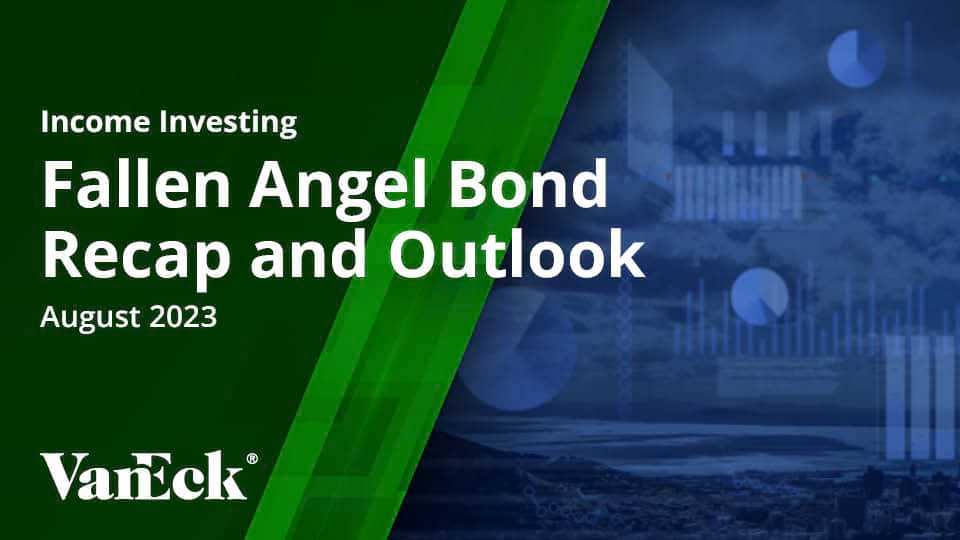Anticipating Shifts in Fallen Angel Sector Exposure
05 August 2024
Watch Time 4:15 MIN
Here are the developments we’re focusing on in the fallen angel bonds space over the second half of the year. In particular, potential downgrades may be coming that could alter the sector exposure of the Fallen Angels Index.
I'm Nicolas Fonseca. I'm here with your update on Fallen Angels. We'll review what happened in Q2 and the developments that we're looking forward over the next 6 to 12 months.
Fallen Angels underperformed Broad High Yield by 160 basis points in Q2 and are now lagging by 153 basis points year to date.
As you'll see on the chart, Q2 underperformance was mostly driven by weakness in the telecom and real estate sectors. Within telecom, there were specifically two issues that caused the drag in performance. One of them being Embarq Corporation, which had been trading at distressed levels throughout the entire year, but it really struggled in June as it was downgraded to CC after a significant decline in liquidity and the expectations that the company may need to restructure its debt.
Within Telecom, the other issue was Lumen Technologies, which significantly widen to more than 2,000 basis points.
In real estate, Office Properties Income Trust, a REIT that's focused on office properties, conducted a distressed exchange, which continue to reflect the ongoing concerns we've mentioned before in the commercial real estate sector.
In terms of yields, Fallen Angel decreased by 20 basis points in June to 7.10%, but it remained elevated compared to the end of Q1 and throughout the entire year. However, spreads continued to trade in the mid-200s. The 10-year ended in June at 4.28%, and has continued to rally with the latest inflation and unemployment data and what looks like a cut by the Fed sometime before the end of the year—which right now looks to be in September.
Speaking of activity, fallen angels or rising stars, we didn't see any fallen angels in Q2, but we did see two rising stars in April. First Energy Corporation and Rolls Royce, both of which were part of the 2020 wave of COVID-related downgrades.
Despite those two rising stars, it appears that the momentum for rising stars has continued to weaken and it looks like we shouldn't have a lot more going forward.
For the remainder of the year and into early 2025, we continue to keep an eye on the Fallen Angels differentiated sector exposure, which has been one of the drivers of long-term outperformance.
For example, if you go back to 2004 and 2005, Fallen Angels were heavily overweight autos and they contributed to outperformance. If you look at 2016 and during the COVID pandemic, it was energy. Right now, fallen angels are notably overweight banking, real estate, retail, and telecom, with the two sectors that we're watching closely being banking and real estate.
Duration is also important to look at right now since most fallen angels sectors have a longer duration than the broad high yield market. And some investors may want to take advantage of when rate cuts occur to try to avoid or even limit reinvestment risk.
In terms of activity for fallen angels and rising stars, JPMorgan is expecting fallen angels to outpace rising stars in what's left of the year, with downgrades expecting to occur within media, basic industry, and retail.
The hot issue right now is Paramount, especially after Moody's put its investment-grade rating on review after it agreed to sell itself to Skydance. We have to note that it is already rated high yield by S&P, but it is still rated investment-grade by Fitch. With that said, we analyzed how Paramount will impact the Fallen Angel index as if it were to be downgraded to high yield.
The Fallen Angel Index hasn't had exposure to the media sector since the middle of 2019. And with Paramount's approximately $13 billion in debt, it will likely reach the index 10% issuer cap, making it the largest exposure of the index. Paramount's duration is also slightly longer than seven years, which would extend the current Fallen Angel Index duration.
Over the last six months, the average price return of Paramount in the broad investment grade was minus 8% approximately. If you look at the chart, it dropped from the high 80s into the low 80s over the last six months.
